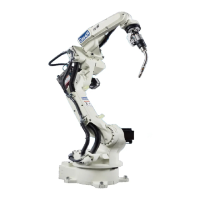1.2 Operations from Designing Screens to Using Them
1-3
1.2 Operations from Designing Screens to Using Them
This section provides an outline of the procedure to be followed starting with the design of the interface panel
screens and ending with their use.
1.2.1 Designing screens
There are two ways to design an interface panel screen. One way is to use the robot controller, and the other is to
use an external personal computer.
It is also possible to use both methods (by using one of them to change the screens designed by the other).
Table 1.2.1 Two methods of designing screens
Item General description
Designing screens using the
robot controller
The layout, button types, colors and other factors can easily be set by
following the menu guide. There is no need to bother about the constants
file format.
Designing screens using an
external personal computer
Since the design information is stored in text files (INI format), a
commercially available text editor is used to edit the information in
accordance with the prescribed rules.
When a completed file is loaded into the robot controller, its syntax and
other features are checked.
The setting information of the interface panel screens is divided into two constants files (the controller general
constants file and I/O constants file) and stores the files in the memory. This is because the information does not only
involve the screen display but it extends to the input/output signals as well. However, when designing the interface
panel screens with a commercially available text editor that runs on an external personal computer, one file (interface
panel file AC**IFP.CON), in which only the interface panel screen information is defined, is created. This interface
panel file is not referenced directly when it is displayed.
By way of operations referred to as reading (import) and writing (export), the interface panel file is converted into two
constants files in the internal memory.
AC**IFP.CON
I/O
constants
files
Controller
general
constants
files
Read
Write
The setting information on the interface panel screens is
divided into the control unit general constants files and
I/O constants files, and stored in the memory.
Interface panel files edited
by personal computer
(using a commercially
available text editor)
Direct editing
Interface
panel
files
Displa
Fig. 1.2.1 Designing screens using an external personal computer
When the setting information on the interface panel screen which was set using one robot controller is to be copied
into a multiple number of other robot controllers, it is easier to use the interface panel file.

